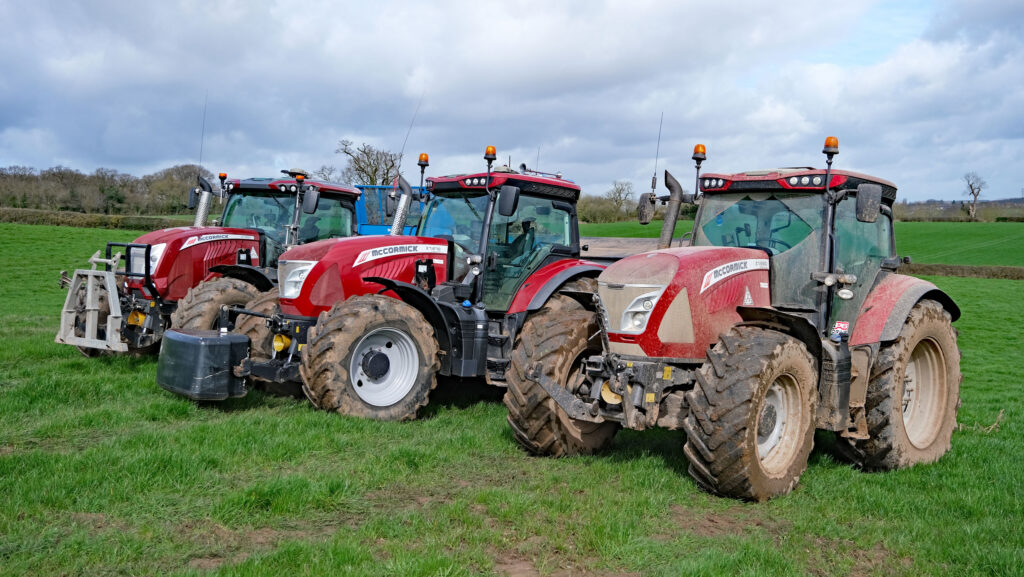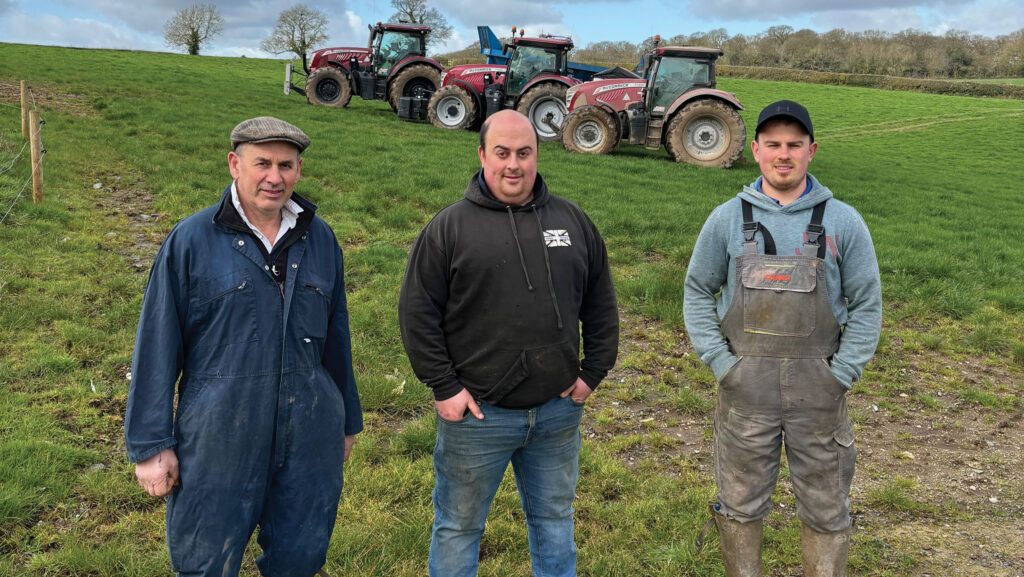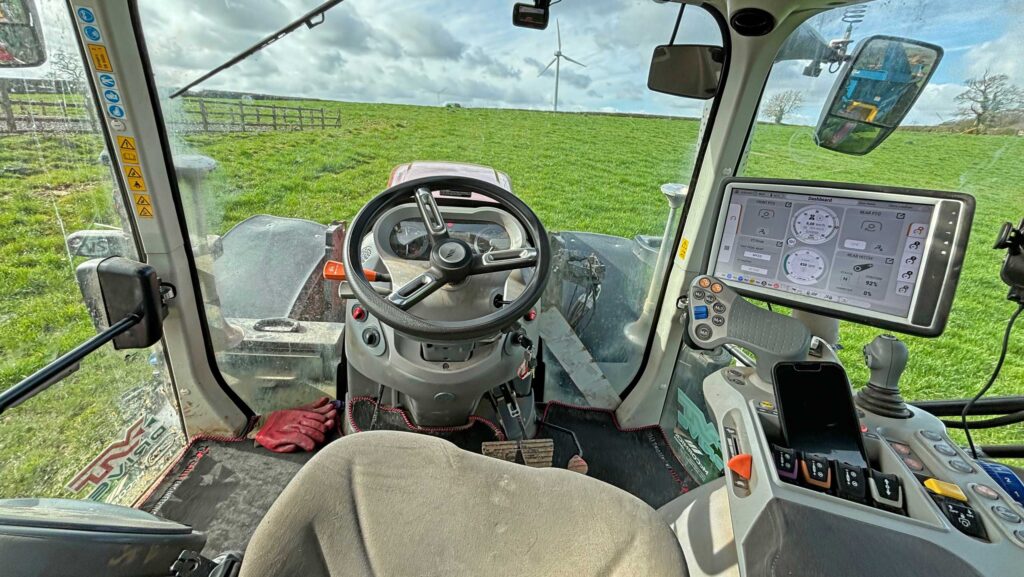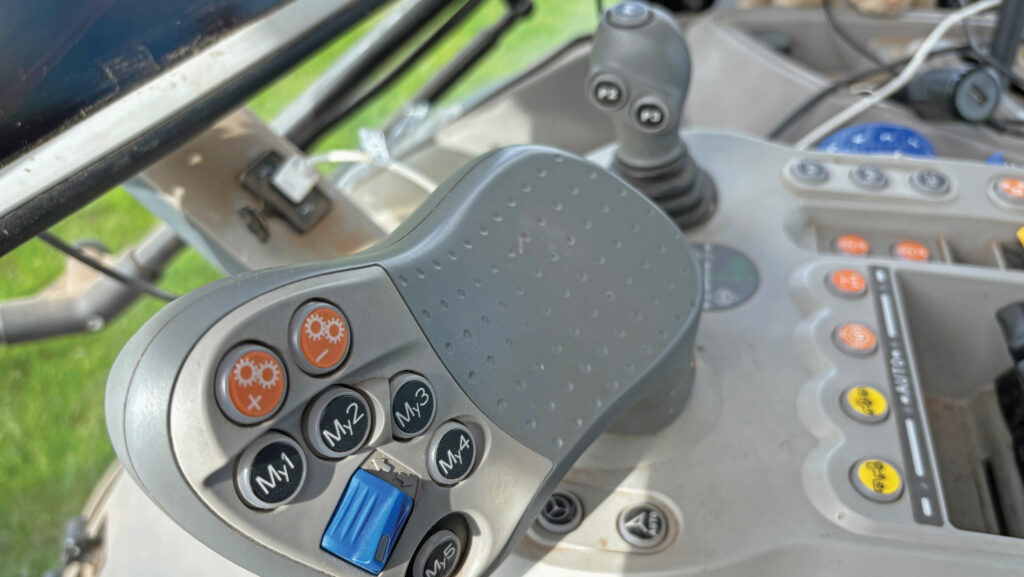Driver’s view: Leics farm rates McCormick’s 240hp X7.624
 © James Andrews
© James Andrews Shifting fewer than 100 tractors a year at the last count makes McCormick one of the lowest volume tractor brands selling in the UK.
But what the Italian marque lacks in market clout, it tries to make up for with a network of friendly family dealerships that promise a more personal approach to customer service.
Some would argue its tractors are underrated, too. Engines are the same dependable FPT units used by New Holland and Case IH, transmissions are sourced from ZF, and both Bosch and Carraro make the credits for their hydraulic systems and axles.
See also: Driver’s view: McCormick X6.413 P6-Drive tractor
Going up against 200hp-plus big guns from the likes of John Deere, Fendt and New Holland is the flagship of McCormick’s X7 range – the 624.
This began landing in dealers’ yards in 2020 and offers a boosted power of 240hp from its 6.7-litre engine.
Stepless is the only transmission option, which comes in the form of a ZF TMT20 as used by Kubota and Deutz-Fahr.
This is made up of four mechanical ranges blended with a hydrostat, all of which shift automatically without any input from the operator.
Giving us the lowdown are Leicestershire dairy, beef and arable farmers Richard, Tom and Henry Leedham, who added an X7.624 to their all-McCormick tractor line-up in 2022.
About Lindridge Farm

Richard, Tom and Henry Leedham © James Andrews
- Central to the Leedhams’ operation is a 280-cow dairy herd, some of the milk from which they pasteurise and sell through vending machines at the farm gate.
- They also produce their own Aberdeen Angus beef, a portion of which is sent away to be butchered before being sold in their shop.
- Most forage is grown on their 200ha holding, including wholecrop rye, maize and grass silage, plus Propcorn preserved grain maize and cereals.
- They also carry out contract umbilical slurry spreading using a 12m dribble bar, self-propelled pumping trailer and a nurse tank, and do some feed milling and baling.
McCormick X7.624
- Year 2022
- Engine 6.7-litre, six-cylinder FPT
- Max/boosted power 230/240hp
- Max/boosted torque 966/983Nm
- Transmission ZF continuously variable
- Weight 8,300kg
- Rear lift 9,300kg
- Hydraulic pump 160 litre/min
- Wheelbase 2,820mm
- Price paid £127,000 in 2022
Why a McCormick X7.624?
The dealer is the biggest reason. Catley Engineering is just down the road from us and Colin gives us a level of service that you just don’t get from massive main-brand dealer groups.
Before switching to McCormick three years ago we had four Massey tractors – a 6465, 6490, 7616 and 8220 – most of which gave us problems.
Every brand suffers from breakdowns, but the dealer wasn’t helpful with the repairs or loaning us tractors when they were out of action, so we decided to look elsewhere.
Of all the dealers we approached, Catley Engineering was the most helpful, immediately sending out a demonstrator X7.690 P6 Drive for us to try.
It performed just as well as an equivalent 200hp Massey and was significantly cheaper, but the backup was an even bigger selling point.
We traded in the 6465 for it and haven’t looked back since. An X7.670 VT Drive came next, replacing the 7616 and 8220, and then we got another second-hand X7.690 in place of the 6490.
The semi-powershift McCormicks haven’t been without their problems, but we’ve always been looked after and have had replacement tractors when they’ve needed to be fixed.
Although they’re both made by ZF, the VT Drive CVT seems to be more reliable than the semi-powershift. They’re nicer to use too, so we’re gradually moving away from the mechanical box.
The X7.624 is our newest addition, which arrived in 2022 to replace the original 690. We wanted a bit more power for pulling our 3.5m Sumo Trio but didn’t want to move to a big clumsy tractor, so it fitted the bill perfectly.
It’s good for 230hp (240hp with boost) but is compact enough to do almost any job on the farm – a bit like a budget Fendt 724.
We priced up a couple of other options before buying the 624, one of which was a John Deere 6R 215. It was a nice tractor, but we didn’t think it was worth the extra £40,000.
What extras did you opt for?
We cut our grass with a set of front-and-rear Pottinger mowers and like to be able to run them on any of the tractors. The 624 didn’t have a front pto as standard, so we paid extra to have one fitted.
It’s also got the necessary brackets to carry a heavy-duty Quicke Q78 loader.
We got this a few years ago when the rising cost of telehandlers forced us to drop from two to one.
It’s a backup most of the year but it really comes into its own at harvest for shifting bales.
The 624 is also “loader ready”, so it’s quick and easy to hook up and go. Once it’s connected, we just press a button on the armrest to switch the function of the second joystick from operating the front linkage to the loader.
Another extra is a Topcon guidance system that runs on a mobile RTK correction signal. This is provided by LH Agro, which has also been helpful with backup and support.
There are a couple of aftermarket bits, such as a stainless-steel exhaust guard from Agri Accessories, air horns and a Spedal Apple CarPlay screen from Amazon.
How has it performed?
It’s gone well and the extra power over the 690 is noticeable, particularly on heavier work.
Fuel use is about the same per hour, but the fact that we can cover more ground means it’s cheaper to run per hectare.
The toughest job we put its way is the Sumo Trio, which definitely gives it some grief.
We can’t pull it fast enough for the boost to engage, but the available 230hp is enough to get up to 9-10kph.
That said, a lot of the time it’s grip rather than power that’s the limiting factor when pulling that machine.
Its other main jobs are muckspreading with a Bunning Lowlander 150, hauling trailers, running a Hesston 4910 baler and carting a 4,000gal Richard Western slurry tanker.
We’ve got our own umbilical setup, which we use with a nurse tank rather than pulling tankers around fields.
The tank is a converted artic lorry trailer and we ferry the slurry to this with the Richard Western tanker and another 2,500gal NC.
The tractor is now in its third season and has clocked 1,200 hours. The only problem we’ve had so far is a leaking front axle seal, which caused back-end oil to pour out when the diff lock tried to engage.
It was a simple enough fix and we weren’t without it for long.

© James Andrews
What are the cab and controls like?
There have been quite a few improvements to the controls over the older models, particularly the customisable joystick “my” buttons that allow us to put functions exactly where we want.
Henry is the main driver and he’s got them set to operate a spool valve, the forward/reverse shuttle and autosteer.
The split screen is also handy for showing guidance and tractor settings at the same time.
Less good is the manual handbrake and the lack of a transmission park.
Not only is this a bit awkward to use, but you can’t guarantee the tractor won’t roll if you park it on a hill with a heavy load behind.
On the whole, the cab is quiet, comfortable and well laid out.
It is a bit smaller than some and doesn’t have that much storage space, although we hear a new larger version is coming out soon. The pale plastics can also be a pain to keep clean.

© James Andrews
Likes and gripes
Likes
- Compact for power
- Good engine and transmission
- Great dealer support
Gripes
- Poor handbrake
- Cab could be larger
- Pale interior can look grubby

